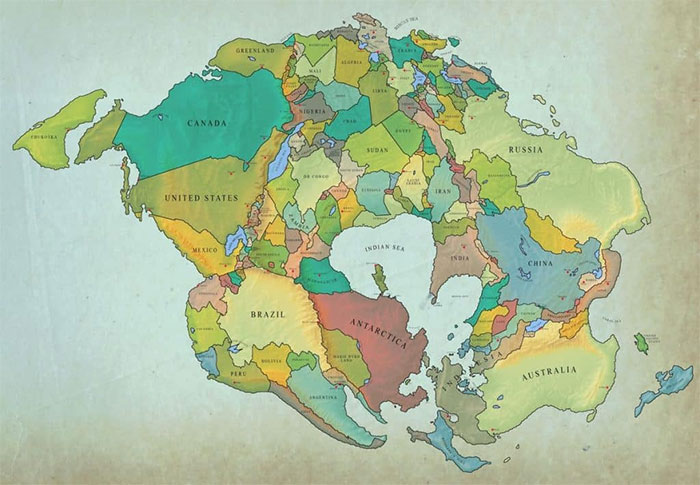What will the world map look like in 250 million years?
Scientists predict that in 250 million years, Earth will have a new supercontinent. But what will it look like?
Imagine a world where the continents merged into a single giant land mass. While it may sound like something out of a science fiction movie, it's actually the natural cycle of Earth's tectonic plates.
The Science Behind Supercontinents
The Earth's crust is divided into tectonic plates that are constantly moving, albeit at a snail's pace. These movements create earthquakes, form mountain ranges, and drive the slow drift of continents. Over millions of years, this process causes land masses to converge, break apart, and converge again into supercontinents.
Pangaea , the most famous supercontinent, existed about 335 million years ago. It eventually broke apart into the continents we know today. But Pangaea wasn't the first supercontinent. Before that, there was Columbia, which formed 1.5 billion years ago, and Rodinia, which came together a billion years ago and began to break apart 750 million years ago.
This cycle of merging and breaking apart is both slow and inevitable. While continents drift at different speeds, scientists have used seismic data and advanced modeling to get a glimpse of what the next supercontinent might look like.
What might the next supercontinent look like?

World map projected in about 250 million years.
Predicting the exact configuration of the continents in the next 250 million years is a major feat. Factors such as plate movement rates and interactions remain difficult to predict over such vast timescales. However, researchers have proposed four plausible scenarios for the next supercontinent:
- Novopangaea: The continents drifted together around the Pacific Ocean and closed completely.
- Aurica: India becomes the center of a vast land mass that unites the surrounding continents.
- Amasia : North America and Asia unite at the North Pole, creating a unique Arctic supercontinent.
- Pangaea Proxima: This is probably the most realistic scenario. Africa, the Americas, Eurasia, Australia and Antarctica converge into one giant land mass.
Studying supercontinents provides important insights into geology, climate, and biodiversity. Supercontinents influence ocean currents, atmospheric patterns, and even the evolution of life. Understanding how these land masses form and break apart helps scientists decipher Earth's past and predict long-term changes.
- Two million years ago, a dish turned hominids into humans?
- Discovering the world's smallest gibbon fossils lived 12.5 million years ago
- A 'screw' from 300 million years ago embedded in a stone, revealing prehistoric peak?
- Antarctica: CO2 density is record high after 4 million years
- The story of little known about 77 million twins in the world
- CO2 in the atmosphere is a record high in 2 million years
- More than 95% of the world's population must breathe unsafe air
- Rare 500 million year old sea snail after 31 years missing
- Discovery of sex chromosomes 248 million years ago in octopuses
- Amazon River 11 million years old
- Shocked with half a billion year old mummy intact as if it died yesterday in China
- Found fossil cockroach species 370 million years ago
 'Fine laughs' - Scary and painful torture in ancient times
'Fine laughs' - Scary and painful torture in ancient times The sequence of numbers 142857 of the Egyptian pyramids is known as the strangest number in the world - Why?
The sequence of numbers 142857 of the Egyptian pyramids is known as the strangest number in the world - Why? History of the iron
History of the iron What is alum?
What is alum?